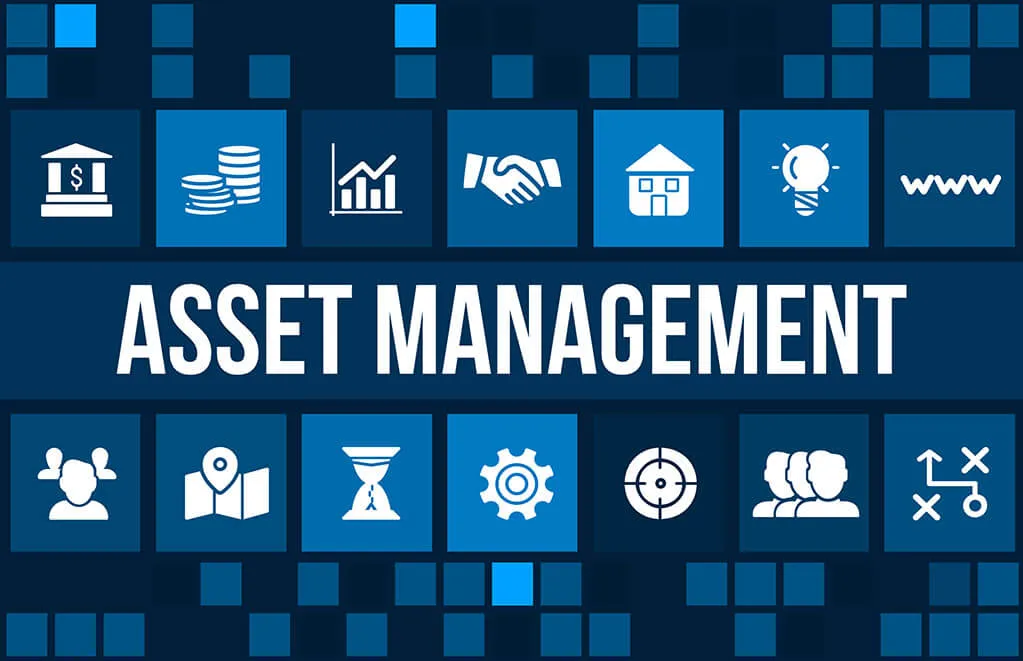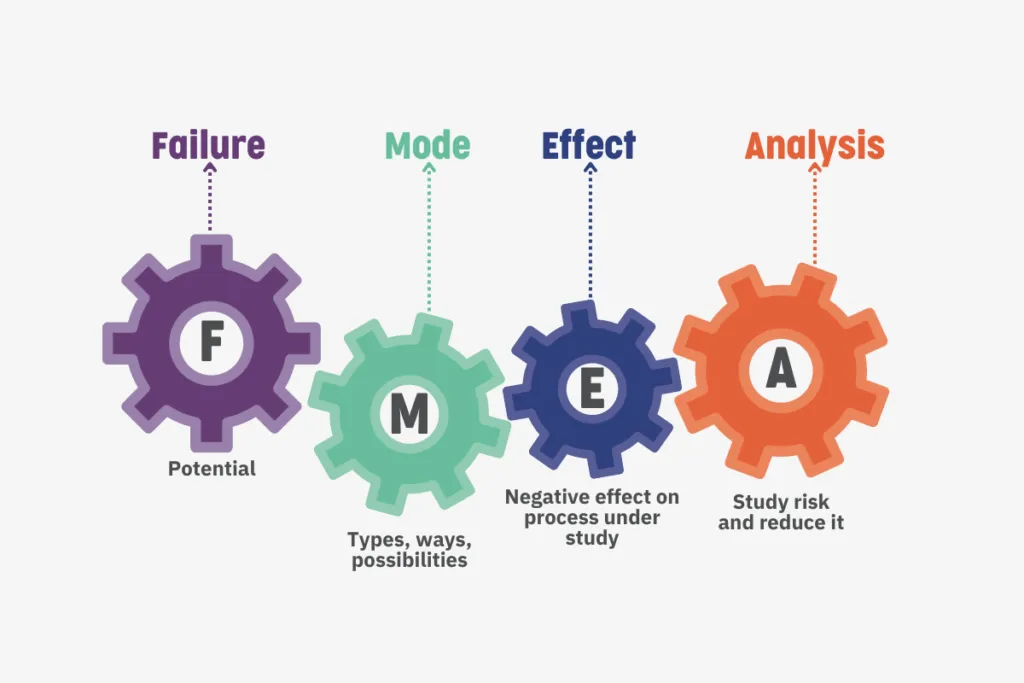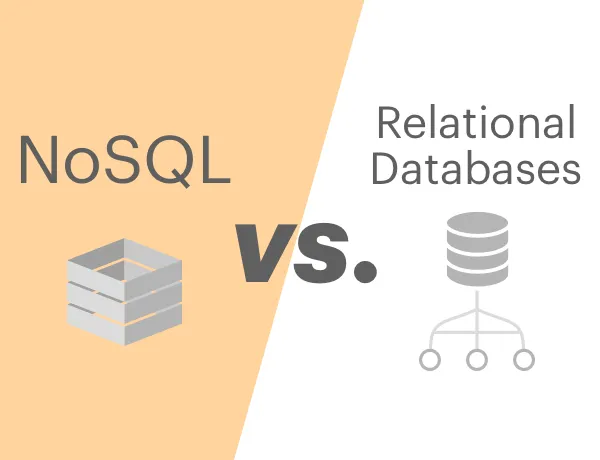Asset Management in Mechanical Databases
Last Updated on December 26, 2023 by Mutiara
Asset management in mechanical databases is a critical aspect of maintaining and optimizing the performance of physical assets within industrial settings. Mechanical assets, such as machinery, equipment, and infrastructure, are vital components of manufacturing, energy, transportation, and various other industries.
Effectively managing these assets involves the systematic organization, tracking, maintenance, and analysis of data related to their lifecycle. In the context of mechanical databases, asset management goes beyond mere record-keeping; it entails leveraging technology and database solutions to ensure the reliability, availability, and longevity of assets. Here’s an in-depth exploration of asset management in mechanical databases:
Asset Management in Mechanical Databases
- Data Organization and Classification: Asset management begins with the systematic organization of data related to each mechanical asset. This includes essential information such as asset specifications, maintenance history, operational parameters, and location. The classification of assets based on criteria such as criticality, usage patterns, and maintenance requirements is crucial for efficient management.
- Lifecycle Tracking: Mechanical assets have distinct lifecycles that span acquisition, installation, operation, maintenance, and retirement or replacement. Asset management in mechanical databases involves tracking each asset throughout its lifecycle. This includes recording the date of acquisition, maintenance activities, performance metrics, and eventual decommissioning or replacement. Comprehensive lifecycle tracking enables organizations to make informed decisions about asset optimization and investment.
- Preventive Maintenance Planning: One of the key objectives of asset management is to implement preventive maintenance strategies. By analyzing historical data within mechanical databases, organizations can identify patterns of wear and potential failure modes. This information informs the development of preventive maintenance schedules, ensuring that maintenance activities are conducted proactively to minimize downtime and extend asset lifespan.
- Condition Monitoring and Sensors: Integration with condition monitoring systems and sensors is a fundamental aspect of asset management in mechanical databases. Real-time data from sensors embedded in assets provide insights into their current condition and performance. This continuous monitoring allows organizations to detect anomalies, predict potential issues, and implement timely interventions.
- Inventory Management: Mechanical assets are often part of larger inventories, especially in manufacturing environments. Asset management includes inventory tracking to ensure that the availability of critical components and spare parts is optimized. This helps reduce lead times for maintenance activities and ensures that assets can be brought back into operation swiftly.
- Compliance and Regulatory Requirements: Many industries have specific regulations and compliance standards governing the operation and maintenance of mechanical assets. Asset management in mechanical databases involves tracking and ensuring compliance with these requirements. This includes maintaining documentation, conducting audits, and generating reports to demonstrate adherence to regulatory standards.
- Integration with Maintenance Workflows: Successful asset management requires seamless integration with maintenance workflows. This involves linking asset management databases with work order systems, scheduling tools, and maintenance documentation. Integration streamlines the flow of information and ensures that maintenance teams have access to up-to-date data for efficient decision-making.
- Data Analytics for Performance Optimization: Asset management databases serve as repositories of valuable historical and real-time data. By applying data analytics techniques, organizations can gain insights into asset performance, identify optimization opportunities, and implement continuous improvement initiatives. Analytics can reveal trends, correlations, and patterns that inform strategic decisions about asset investment and utilization.
- Risk Assessment and Mitigation: Assessing and mitigating risks associated with mechanical assets is an integral part of asset management. This involves evaluating factors such as the criticality of assets, potential failure modes, and the impact of asset downtime. By conducting risk assessments, organizations can prioritize maintenance activities and allocate resources effectively.
- Asset Retirement and Replacement Planning: Mechanical assets have a finite lifespan, and asset management includes planning for their retirement or replacement. By analyzing historical performance data and considering factors such as technological advancements, organizations can develop informed strategies for retiring assets at the optimal time and introducing newer, more efficient equipment.
Challenges in asset management in mechanical databases include the need for accurate and timely data input, the integration of diverse data sources, and the selection of suitable technology solutions. Overcoming these challenges requires a holistic approach that involves collaboration between asset managers, maintenance teams, data scientists, and IT professionals.
Asset management in mechanical databases is a multidimensional process that encompasses data organization, lifecycle tracking, preventive maintenance, condition monitoring, compliance adherence, and performance optimization. Leveraging technology and database solutions, organizations can maximize the value of their mechanical assets, minimize downtime, and enhance overall operational efficiency.
Mechanical Asset Tracking Software
Mechanical asset tracking software is a specialized solution designed to streamline the management of physical assets within mechanical systems. In industries such as manufacturing, energy, transportation, and construction, effective tracking and management of mechanical assets are essential for optimizing performance, ensuring reliability, and minimizing downtime. Mechanical asset tracking software leverages advanced technologies, including databases, sensors, and real-time monitoring, to provide organizations with comprehensive insights into the whereabouts, condition, and maintenance needs of their mechanical assets. Let’s explore the key features and benefits of mechanical asset tracking software:
- Barcode and RFID Integration: Mechanical asset tracking software often integrates with barcode and RFID (Radio-Frequency Identification) technologies. Each mechanical asset is assigned a unique barcode or RFID tag, enabling quick and accurate identification. This streamlines the process of asset tracking, from acquisition to maintenance activities, by eliminating manual data entry errors.
- Real-Time Location Tracking: Many mechanical asset tracking solutions offer real-time location tracking capabilities. Through the integration of GPS or other location-based technologies, organizations can monitor the precise location of assets within their facilities. Real-time tracking enhances visibility, reduces the risk of asset loss or theft, and facilitates efficient retrieval during maintenance or operational needs.
- Condition Monitoring Sensors: To assess the health and performance of mechanical assets, tracking software often integrates with condition monitoring sensors. These sensors measure parameters such as temperature, vibration, and operational metrics. The real-time data generated by these sensors allows organizations to proactively address potential issues, schedule preventive maintenance, and optimize asset performance.
- Lifecycle Management: Mechanical asset tracking software facilitates comprehensive lifecycle management. From the moment an asset is acquired, the software records key information such as purchase date, maintenance history, and operational parameters. This historical data supports decision-making regarding preventive maintenance, retirement planning, and replacement strategies.
- Maintenance Work Order Integration: Seamless integration with maintenance work order systems is a crucial feature of asset tracking software. This integration ensures that asset tracking and maintenance activities are closely aligned. When maintenance is required, work orders can be generated automatically, and maintenance teams can access detailed information about the asset’s history and condition.
- Mobile Accessibility: Many asset tracking solutions offer mobile accessibility, allowing users to track and manage assets from anywhere using mobile devices. This is particularly valuable for field technicians, maintenance teams, and asset managers who need real-time access to asset information while on the move.
- Automated Alerts and Notifications: To enhance proactive maintenance, asset tracking software provides automated alerts and notifications. These alerts can be triggered based on predefined conditions, such as exceeding temperature thresholds, irregular vibrations, or upcoming maintenance schedules. Automated notifications ensure that relevant stakeholders are informed promptly.
- Data Analytics and Reporting: Mechanical asset tracking software incorporates data analytics capabilities for performance analysis and reporting. Organizations can generate reports on asset utilization, maintenance history, and overall asset health. Data analytics tools help identify trends, assess the effectiveness of maintenance strategies, and make informed decisions for optimization.
- Integration with IoT Devices: The Internet of Things (IoT) plays a significant role in mechanical asset tracking. Many assets are equipped with IoT devices that continuously transmit data to the tracking software. This data includes real-time performance metrics, enabling organizations to monitor assets remotely, predict potential issues, and implement timely interventions.
- User Permissions and Security: Robust user permissions and security features are essential for protecting sensitive asset data. Asset tracking software allows organizations to define user roles and access levels, ensuring that only authorized personnel can view, modify, or delete asset information. This safeguards data integrity and enhances overall security.
Implementing mechanical asset tracking software requires careful consideration of the organization’s specific needs, the nature of the assets, and the integration requirements with existing systems. By leveraging the capabilities of such software, organizations can optimize asset utilization, reduce maintenance costs, and enhance overall operational efficiency.
Database Solutions for Asset Management
Database solutions for asset management play a pivotal role in organizing, storing, and analyzing the vast amount of data associated with physical assets within an organization. Asset management encompasses a wide range of activities, including tracking asset lifecycles, scheduling maintenance, optimizing utilization, and ensuring compliance with regulatory standards. Database solutions provide a structured and scalable framework for managing asset-related data efficiently. Here’s an exploration of key features and benefits of database solutions for asset management:
- Data Organization and Centralization: Asset management databases serve as centralized repositories for organizing and storing diverse data related to assets. This includes information about asset specifications, maintenance history, location, and associated documents. Centralization streamlines data access and ensures that stakeholders can retrieve up-to-date information from a single source.
- Relational Database Management Systems (RDBMS): Relational Database Management Systems, such as MySQL, PostgreSQL, and Microsoft SQL Server, are commonly used for asset management. These systems enable the creation of structured tables with relationships between different types of asset data. RDBMS ensures data integrity, facilitates efficient queries, and supports complex asset management workflows.
- Asset Identification and Classification: Database solutions allow for the systematic identification and classification of assets. Each asset is assigned a unique identifier, and classification criteria, such as asset type, location, or usage, are defined. This enables organizations to categorize assets based on relevant parameters for effective management.
- Integration with External Systems: Asset management databases often integrate with other enterprise systems, such as Enterprise Resource Planning (ERP) and Customer Relationship Management (CRM) software. This integration ensures that asset data is synchronized across different departments and business functions, avoiding data silos and improving overall organizational efficiency.
- Scalability and Performance: As organizations grow, the volume of asset-related data also increases. Database solutions for asset management must be scalable to accommodate this growth. Scalable databases ensure that performance remains optimal, even as the number of assets and associated data points expands.
- Customization and Flexibility: Each organization has unique asset management requirements based on industry, asset types, and operational processes. Database solutions offer customization and flexibility to adapt to these specific needs. Customizable data fields, user interfaces, and reporting functionalities enable organizations to tailor the asset management database to their workflow.
- Audit Trail and Historical Data: Maintaining an audit trail of changes and historical data is crucial for asset management. Database solutions record every modification to asset data, allowing organizations to track changes over time. This audit trail provides transparency, supports compliance requirements, and aids in troubleshooting discrepancies.
- User Access Controls: Database solutions for asset management incorporate robust user access controls. Organizations can define roles and permissions to restrict access to sensitive asset data. This ensures that only authorized personnel can view, modify, or delete specific information, safeguarding data security and integrity.
- Reporting and Analytics: Asset management databases facilitate the generation of reports and analytics dashboards. These tools enable organizations to gain insights into asset utilization, maintenance performance, and overall asset health. Reporting capabilities support data-driven decision-making and continuous improvement initiatives.
- Cloud-Based Asset Management Databases: Cloud-based database solutions offer the advantage of accessibility from anywhere with an internet connection. Organizations can leverage cloud platforms, such as Amazon Web Services (AWS), Microsoft Azure, or Google Cloud Platform, for scalable and secure asset management databases. Cloud-based solutions also facilitate easy updates and maintenance without on-premises infrastructure concerns.
- Mobile Compatibility: In modern workplaces, mobile compatibility is essential for on-the-go access to asset data. Asset management databases that support mobile devices enable field technicians, maintenance teams, and asset managers to access and update information in real time, enhancing overall operational efficiency.
- Lifecycle Management Features: Database solutions support comprehensive lifecycle management for assets. This includes recording acquisition details, tracking maintenance activities, scheduling preventive maintenance, and planning for asset retirement or replacement. Lifecycle management features ensure a holistic approach to asset management.
Best Practices for Mechanical Asset Tracking
Mechanical asset tracking is a crucial component of effective asset management, providing organizations with the means to monitor, manage, and optimize the performance of their mechanical assets. Whether in manufacturing, energy, transportation, or other industries, adopting best practices for mechanical asset tracking is essential for enhancing operational efficiency, minimizing downtime, and extending the lifespan of critical equipment. Here are key best practices for effective mechanical asset tracking:
- Centralized Asset Database: Establish a centralized asset database that serves as a single source of truth for all mechanical asset-related information. This database should include comprehensive details such as asset specifications, maintenance history, location, and any relevant documents. Centralization ensures that stakeholders across the organization have consistent and up-to-date information.
- Unique Asset Identification: Implement a robust system for unique asset identification, such as barcodes, QR codes, or RFID tags. Each asset should have a distinct identifier that facilitates quick and accurate tracking. This practice minimizes errors in data entry and streamlines the overall tracking process.
- Real-Time Location Tracking: Leverage real-time location tracking technologies, including GPS or indoor positioning systems, to monitor the precise location of assets. This capability is particularly valuable in large facilities where assets may be spread across different areas. Real-time tracking enhances visibility, reduces the risk of loss, and enables efficient retrieval during maintenance or operational needs.
- Condition Monitoring Sensors: Integrate condition monitoring sensors into mechanical assets to capture real-time performance data. Sensors can measure parameters such as temperature, vibration, and operational metrics. The continuous monitoring provided by these sensors allows organizations to detect anomalies, predict potential issues, and implement timely interventions before failures occur.
- Regular Data Audits: Conduct regular audits of asset data to ensure accuracy and consistency. Data audits help identify and rectify discrepancies, update outdated information, and maintain the integrity of the asset database. Regular reviews also provide insights into data quality and reliability.
- Integration with Maintenance Workflows: Ensure seamless integration between the asset tracking system and maintenance workflows. This involves linking asset tracking databases with work order systems, scheduling tools, and maintenance documentation. Integration streamlines communication between asset managers and maintenance teams, facilitating proactive maintenance activities.
- Mobile Accessibility: Embrace mobile accessibility for asset tracking, allowing users to access and update asset information on the go. Mobile compatibility is especially important for field technicians and maintenance teams who need real-time access to asset data while working in the field. Mobile applications enhance flexibility and responsiveness.
- Automated Alerts and Notifications: Implement automated alerts and notifications based on predefined conditions. These alerts can be triggered by factors such as upcoming maintenance schedules, deviations in asset performance, or critical events. Automated notifications ensure that relevant stakeholders are informed promptly, enabling swift responses to potential issues.
- User Training and Awareness: Provide comprehensive training for users involved in asset tracking to ensure that they understand the system’s functionalities and best practices. User awareness contributes to accurate data entry, proper utilization of tracking technologies, and adherence to established procedures. Training programs also help users adapt to updates or changes in the asset tracking system.
- Scalability and Future-Proofing: Choose asset tracking solutions that are scalable to accommodate the growth of the organization and the increasing volume of asset-related data. Additionally, consider the future-proofing of the system by selecting technologies and platforms that can adapt to evolving industry standards and technological advancements.
- Regular System Updates and Maintenance: Keep the asset tracking system up to date with regular updates and maintenance. This includes software updates, security patches, and improvements to system functionalities. Regular maintenance ensures the continued reliability and security of the asset tracking infrastructure.
- Collaboration between Departments: Foster collaboration between different departments, including asset management, maintenance, IT, and operations. Effective communication and collaboration contribute to a holistic approach to mechanical asset tracking, aligning tracking efforts with broader organizational goals and strategies.
- Data Security and Compliance: Prioritize data security and compliance with relevant regulations and standards. Protect sensitive asset data by implementing robust access controls, encryption mechanisms, and regular security audits. Compliance with industry-specific regulations ensures that the organization operates within legal and ethical frameworks.
- Performance Analytics and Continuous Improvement: Utilize performance analytics tools to analyze data collected from mechanical assets. These analytics provide insights into asset utilization, maintenance effectiveness, and overall performance. Continuous improvement initiatives can be informed by analytics, optimizing asset management strategies over time.
- Regular Review of Tracking Technologies: Stay abreast of advancements in tracking technologies and periodically assess their applicability to the organization’s needs. Emerging technologies, such as the Internet of Things (IoT) and advanced sensor technologies, may offer new possibilities for improving mechanical asset tracking.
Adhering to these best practices for mechanical asset tracking contributes to the overall success of asset management initiatives. By implementing a robust tracking system and embracing technologies that enhance visibility and efficiency, organizations can achieve improved asset performance, reduced downtime, and increased operational resilience.
Asset Performance Management in Databases
Asset performance management (APM) in databases refers to the holistic approach of optimizing the performance, reliability, and efficiency of assets within an organization through the strategic use of data and database solutions. In various industries such as manufacturing, energy, and transportation, where assets play a critical role in operations, implementing APM in databases is instrumental for maximizing asset value and minimizing unplanned downtime. Here are key aspects and best practices of asset performance management in databases:
- Comprehensive Data Collection: APM in databases begins with comprehensive data collection from various sources, including sensors, IoT devices, maintenance records, and operational data. This data provides insights into the current condition and performance of assets, serving as the foundation for performance analysis.
- Relational Database Management Systems (RDBMS): Implement a robust Relational Database Management System (RDBMS) to organize and store asset performance data. RDBMS facilitates the structuring of data in tables with relationships, ensuring data integrity and efficient querying for performance analysis.
- Integration with IoT Devices: Leverage the capabilities of the Internet of Things (IoT) by integrating IoT devices with the asset performance management database. IoT devices, such as sensors and actuators, continuously collect real-time data, enabling organizations to monitor asset performance and detect anomalies.
- Performance Metrics Definition: Define key performance metrics that align with organizational goals and objectives. These metrics may include asset uptime, reliability, efficiency, and overall equipment effectiveness (OEE). Clear definitions of performance metrics provide a basis for measuring and improving asset performance.
- Predictive Analytics for Asset Health: Implement predictive analytics models within the asset performance management database to assess the health of assets. Predictive analytics leverage historical and real-time data to forecast potential issues, estimate remaining useful life, and recommend optimal maintenance schedules.
- Condition-Based Maintenance Strategies: Utilize condition-based maintenance strategies based on insights derived from asset performance data. Instead of relying on fixed maintenance schedules, condition-based maintenance allows organizations to perform maintenance activities when assets exhibit signs of deterioration or abnormal behavior.
- Root Cause Analysis: Incorporate root cause analysis into the asset performance management process. When asset failures or deviations occur, analyzing historical data within the database helps identify the underlying causes. Root cause analysis informs corrective actions and contributes to continuous improvement.
- Real-Time Monitoring and Alerts: Implement real-time monitoring capabilities to track asset performance continuously. Alerts and notifications can be set up within the database to trigger when predefined thresholds are exceeded or when anomalies are detected. Real-time monitoring enables rapid response to emerging issues.
- Cross-Functional Collaboration: Foster collaboration between different departments, including maintenance, operations, and data analytics teams. Cross-functional collaboration ensures that insights from the asset performance management database are shared effectively, leading to coordinated efforts in optimizing asset performance.
- Benchmarking and Comparative Analysis: Conduct benchmarking and comparative analysis to assess how assets perform relative to industry benchmarks or internal standards. Comparative analysis helps identify areas for improvement and sets realistic performance targets for assets.
- Historical Trend Analysis: Analyze historical trends within the asset performance management database to identify patterns and recurring issues. Historical trend analysis provides valuable insights into long-term asset behavior, enabling organizations to implement proactive measures to prevent recurring issues.
- Data Visualization and Dashboards: Utilize data visualization tools and dashboards to present asset performance metrics in an easily understandable format. Visual representations of data aid in quickly identifying trends, anomalies, and performance patterns. Dashboards provide a centralized view of asset health.
- Continuous Data Quality Management: Prioritize continuous data quality management to ensure the accuracy and reliability of asset performance data. Regularly validate and cleanse data within the database to prevent inaccuracies that could impact performance analysis and decision-making.
- Scalability for Growing Datasets: Choose a database solution that is scalable to accommodate the growing volume of asset performance data. Scalability ensures that the asset performance management database can handle increased data loads as the organization expands.
- Feedback Loops for Continuous Improvement: Establish feedback loops that enable continuous improvement based on insights gained from the asset performance management database. Act on lessons learned, refine predictive models, and update maintenance strategies to drive ongoing optimization.
Implementing asset performance management in databases requires a strategic approach that integrates technology, data analytics, and collaboration across departments. By adopting these best practices, organizations can optimize the performance of their assets, reduce maintenance costs, and enhance overall operational efficiency.
Asset Lifecycle Management in Mechanical Systems
Asset lifecycle management (ALM) in mechanical systems involves the systematic planning, acquisition, operation, maintenance, and eventual retirement or replacement of assets throughout their entire lifespan. This holistic approach to asset management ensures that organizations maximize the value of their mechanical assets while minimizing total cost of ownership. Implementing asset lifecycle management in mechanical systems involves several key practices and considerations:
- Strategic Planning: Begin asset lifecycle management with strategic planning that aligns with the organization’s overall goals. Define the purpose of each asset, its role in operations, and the expected outcomes throughout its lifecycle. Strategic planning sets the foundation for effective asset management strategies.
- Asset Identification and Classification: Identify and classify assets based on relevant criteria, such as criticality, usage patterns, and maintenance requirements. Classification allows organizations to prioritize assets, allocate resources efficiently, and tailor maintenance strategies to the specific needs of each asset category.
- Acquisition and Procurement: During the acquisition phase, focus on selecting assets that meet performance requirements, are cost-effective, and align with the organization’s long-term objectives. Establish procurement processes that ensure the quality and reliability of assets while considering factors such as supplier relationships and lifecycle costs.
- Installation and Commissioning: Proper installation and commissioning are crucial for ensuring that assets operate optimally from the start. Follow manufacturer guidelines and industry best practices to install and commission mechanical assets. Thorough testing and validation during this phase contribute to long-term reliability.
- Operations and Utilization: Optimize asset operations and utilization by implementing efficient workflows and maintenance strategies. Regularly monitor asset performance, address operational inefficiencies, and ensure that assets are utilized in a manner that aligns with their design specifications and intended purpose.
- Preventive Maintenance: Implement preventive maintenance strategies based on insights from historical data and condition monitoring. Regularly scheduled maintenance activities, such as inspections and component replacements, extend the lifespan of assets and reduce the likelihood of unplanned downtime.
- Condition-Based Maintenance: Integrate condition-based maintenance practices into asset lifecycle management. Leverage real-time data from sensors and monitoring systems to assess the health of assets. Condition-based maintenance allows organizations to address issues as they arise, optimizing maintenance resources and minimizing disruptions.
- Predictive Analytics: Apply predictive analytics to forecast potential issues and estimate the remaining useful life of assets. Predictive analytics models, integrated into the asset lifecycle management process, enhance decision-making by providing insights into when maintenance activities are most effective and cost-efficient.
- Asset Performance Monitoring: Continuously monitor asset performance throughout its lifecycle. Track key performance indicators, measure efficiency, and analyze operational data to identify areas for improvement. Performance monitoring informs decision-making related to maintenance, upgrades, and asset optimization.
- Adaptive Strategies for Aging Assets: Develop adaptive strategies for aging assets as they approach the latter stages of their lifecycle. This may involve modifications, upgrades, or proactive replacement plans. Adaptive strategies ensure that organizations can address the challenges associated with aging assets.
Implementing a database solution for asset management requires a strategic approach, involving collaboration between IT professionals, asset managers, and end-users. The choice of database solution depends on factors such as organizational size, complexity of asset management workflows, and integration requirements with existing systems. By leveraging database solutions tailored to their needs, organizations can streamline asset management processes, optimize asset performance, and achieve long-term operational excellence.








